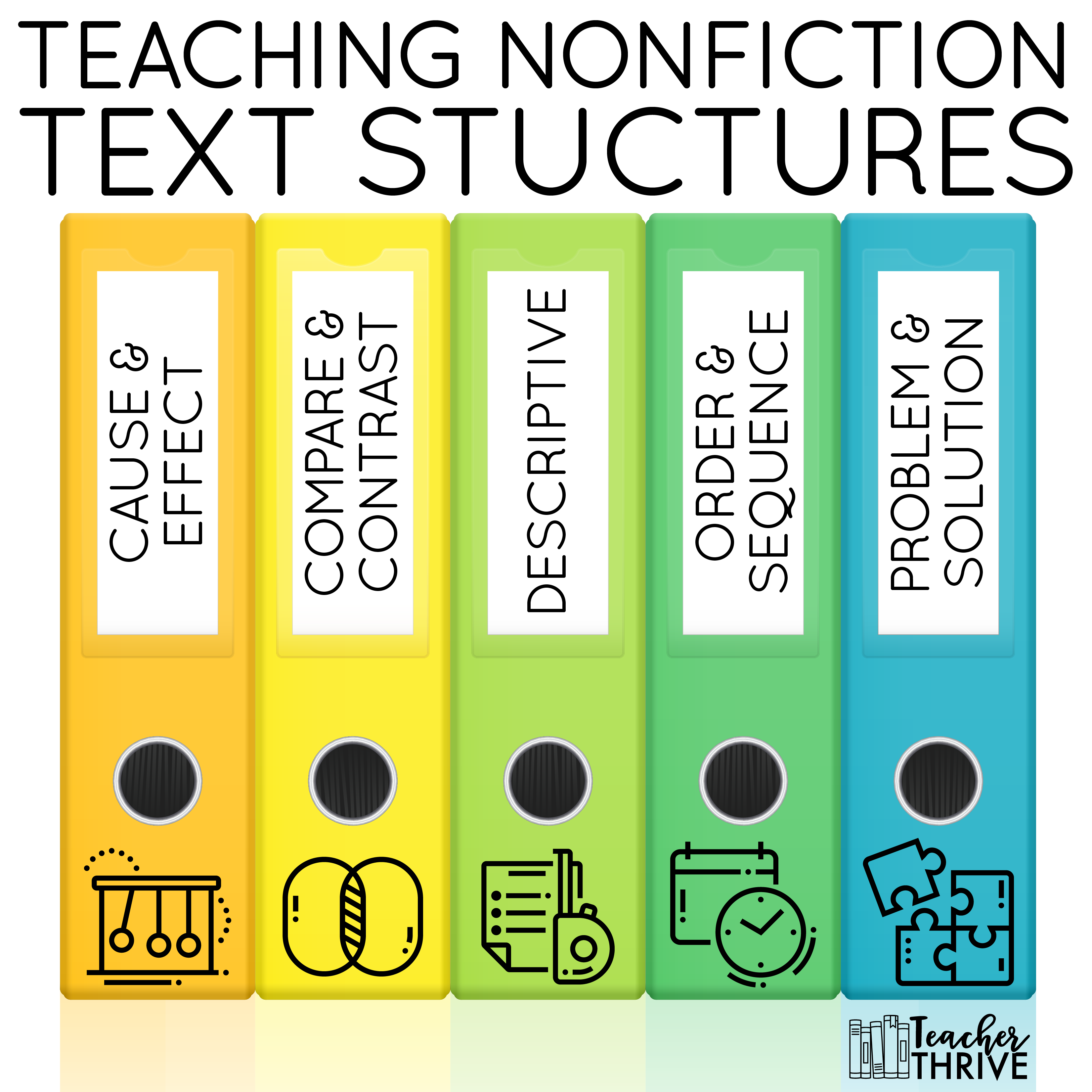Teaching nonfiction text structures is crucial for developing students’ reading comprehension and analytical skills. Understanding the various organizational patterns in nonfiction texts empowers students to navigate information more effectively and critically evaluate content. As an educator, you play a pivotal role in equipping your students with the tools to comprehend and engage with nonfiction texts. In this blog post, we will explore some valuable tips to enhance your teaching of nonfiction text structures and help your students become proficient readers and thinkers.
- Text Structures: Introduce students to the different types of nonfiction structures commonly found in informational texts. The main structures include chronological, cause and effect, compare and contrast, problem and solution, and descriptive. Explain each structure and provide examples to help students grasp the purpose and organization of each type. Consider using anchor charts or classroom posters to represent the structures and reinforce understanding visually. Complete the form below, and I will send you a free set of classroom posters.
- Model and Mentor Texts: Utilize model and mentor texts that exemplify each text structure to expose students to real-world examples. These texts can be excerpts from articles, essays, or books that clearly demonstrate a specific structure. Students can identify the key elements, transitions, and language cues that signal a particular text structure by analyzing these texts together. Encourage discussions and ask probing questions to deepen their comprehension and critical thinking skills.
- Graphic Organizers: Graphic organizers are powerful tools for teaching nonfiction text structures. Provide students with graphic organizers corresponding to each structure, such as a timeline for chronological text or a Venn diagram for comparing and contrasting. These visual aids help students organize their thoughts, identify main ideas, and make connections between different text elements. Encourage students to independently fill in the graphic organizers as they read and analyze nonfiction texts.
- Textual Clues: Teach students to identify textual clues and keywords that indicate the presence of a specific text structure. For instance, words like “because,” “as a result,” or “due to” can suggest a cause-and-effect structure, while words like “similarly,” “unlike,” or “in contrast” may signal a compare-and-contrast structure. By highlighting and discussing these clues, students become more attuned to the underlying organization of a text, enabling them to extract meaning more effectively.
- Text Pairings and Comparisons: Engage students in activities that involve comparing and contrasting texts with different structures on the same topic. By analyzing how other authors choose to present information, students develop a deeper understanding of the purpose and impact of each structure. Encourage discussions about the strengths and weaknesses of various structures in conveying information, supporting arguments, or engaging the reader. This exercise helps students appreciate the versatility and flexibility of nonfiction text structures.
- Scaffolded Practice: Provide ample opportunities for students to practice identifying and analyzing text structures. Begin with guided practice exercises, where you walk students through the process of identifying structures and extracting key information. Gradually release responsibility by incorporating independent practice activities, such as reading passages or articles and asking students to identify the structure and explain their reasoning. Provide constructive feedback and encourage reflection to promote growth and mastery.
- Authentic Application: Encourage students to apply their understanding of text structures in real-world contexts. Assign projects or tasks that require students to create their own informational texts, utilizing different structures to present information. This authentic application not only reinforces their comprehension but also nurtures their creativity and communication skills. Celebrate and showcase their work to foster a sense of achievement and pride.
Teaching nonfiction text structures equips students with valuable skills to navigate and make sense of the vast amount of information they encounter daily. By introducing text structures, utilizing mentor texts, employing graphic organizers, and providing ample practice.











